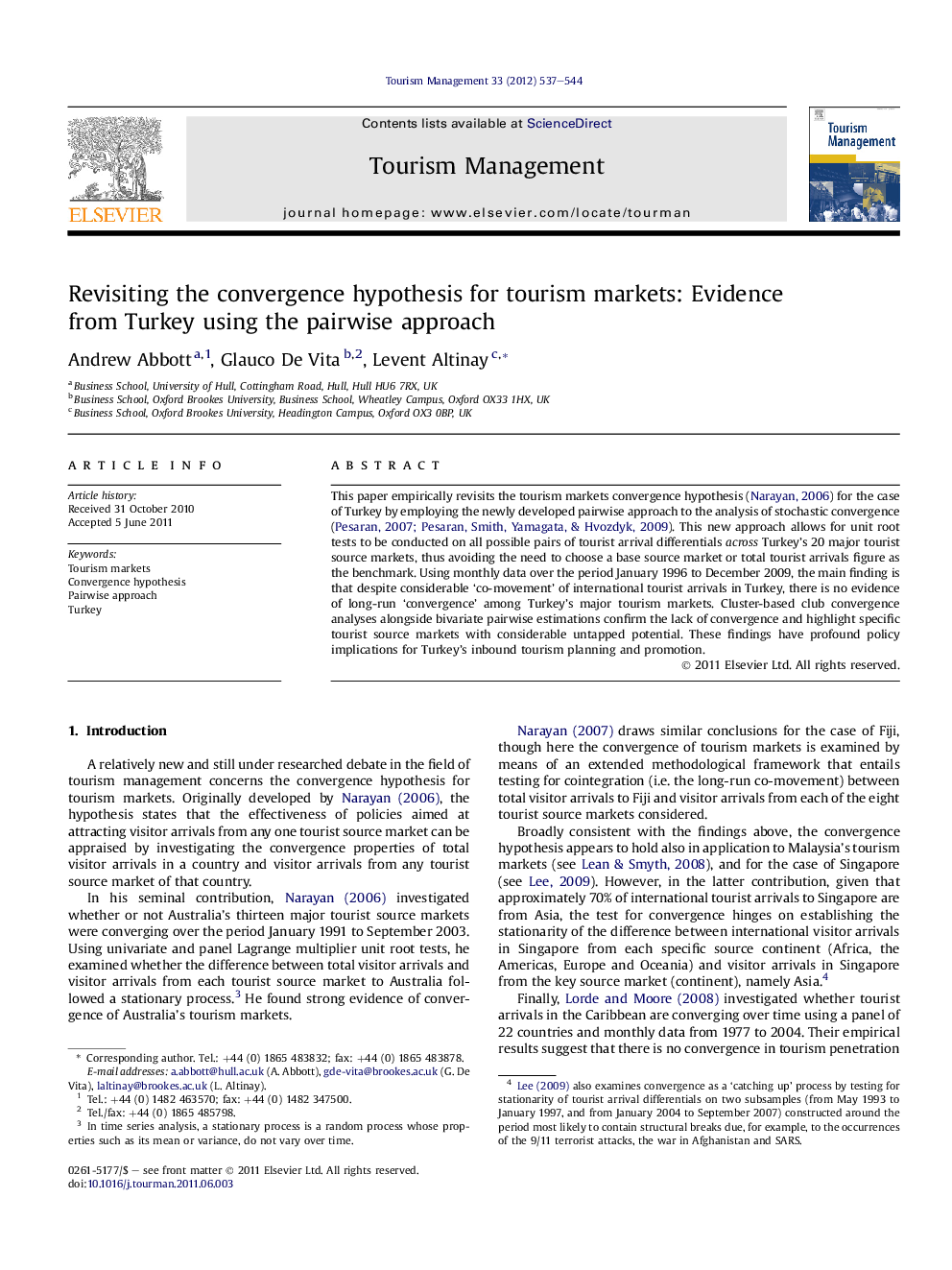| Article ID | Journal | Published Year | Pages | File Type |
|---|---|---|---|---|
| 1012469 | Tourism Management | 2012 | 8 Pages |
This paper empirically revisits the tourism markets convergence hypothesis (Narayan, 2006) for the case of Turkey by employing the newly developed pairwise approach to the analysis of stochastic convergence (Pesaran, 2007 and Pesaran et al., 2009). This new approach allows for unit root tests to be conducted on all possible pairs of tourist arrival differentials across Turkey’s 20 major tourist source markets, thus avoiding the need to choose a base source market or total tourist arrivals figure as the benchmark. Using monthly data over the period January 1996 to December 2009, the main finding is that despite considerable ‘co-movement’ of international tourist arrivals in Turkey, there is no evidence of long-run ‘convergence’ among Turkey’s major tourism markets. Cluster-based club convergence analyses alongside bivariate pairwise estimations confirm the lack of convergence and highlight specific tourist source markets with considerable untapped potential. These findings have profound policy implications for Turkey’s inbound tourism planning and promotion.
